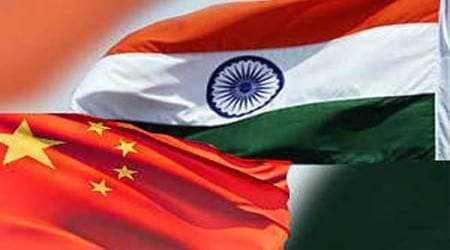 Applying Edward Said’s thesis of Orientalism to British colonial scholarship on India is what The Ruler’s Gaze is about.
Applying Edward Said’s thesis of Orientalism to British colonial scholarship on India is what The Ruler’s Gaze is about.
In 1978, the Lebanese American scholar Edward Said published a seminal treatment of how the Western world and its scholarship viewed the Islamic world of the Middle East. His central argument was: knowledge is embedded in equations of power and all Western scholarship on nonwestern societies is tainted by its association with imperialism. Power therefore defined knowledge. The reception of ‘Orientalism’ is not surprising. The 1970s was an era when the west seemed to be rolling back. The Soviet invasion of Afghanistan followed in 1979. The Shia revolution in Iran in the same year was as much an ideological and intellectual revolution against the West and the USA as a political revolution against the Shah. The spread of extremism and Islamic fundamentalism elsewhere challenged then, as it does now, deeply engrained notions of what constituted progress in Western eyes. Said’s book Orientalism became a classic, as it remains to this day.
Academic critiques of Said were no less powerful. Substantial parts of the book delved into periods when the Islamic world was not subordinated to the West. So, perceptions of Islam as degenerate and backward did not develop as a consequence of Western conquest but, in fact, had predated it. Said’s argument about power and knowledge was much criticised on this ground. But even at that time, there was the view that the perfect match to study the relationship between imperial power and knowledge was to be found not so much in the middle east but in colonial India.
Applying Edward Said’s thesis of Orientalism to British colonial scholarship on India is what The Ruler’s Gaze is about. Arvind Sharma is a professor of comparative religion in Montreal. This is, in part, an assimilative work drawing on a wide range of studies in the past quarter-century, which have asked questions like those he raises: How did colonial scholarship evolve, and how did the process of studying colonial subjects and themes also transform the colonies in greater or lesser measure? This is a book refreshingly free of jargon — it’s a good point for the serious but general reader to start with to understand how much colonialism and imperialism permeated scholarship, and how very clearly the relationship between knowledge and power was understood by both sets of practitioners.

Sharma describes, as others have before him, how scholarship about India and Indians changed as the East India Company transformed itself from a trading enterprise to a political and then a colonial power. The initial fascination, even admiration, for India and things Indians, acquired through the 19th century gave way, especially after 1857, to deep biases arising from a sense of contempt. He also does well to remind us how intrinsic missionary activity was to the entire imperial project as critiques of Hinduism went hand in hand with efforts at conversion. Racism also permeated colonial scholarship to a greater extent than is generally conceded. I found one particular instance cited by Sharma striking. Annette Beveridge, wife of a British civil servant and scholar, was an accomplished Persian scholar in her own right. Her translation of Gulbadan Begum’s Humayun Namah in the late 19th century is a work of great sensitivity and charm, as a woman of the time sought to understand and contextualise the account of a Mughal princess in the 17th century. But Beveridge was also at the forefront of the agitation in India insisting that Indian judges not be allowed to try English or white people. Beveridge then wrote about the social ideas of Hindus as being “on the outer verge of civilisation” and that she had no hesitation in calling them “uncivilised a people which cares about stone idols, enjoys child marriage and secludes its women, and where at every point the fact of sex is present to the mind.” In brief, how could such people be allowed to try English men and women!
Nevertheless, this is not a book about the inequities of British rule in India (although there is some of that) but rather about how British scholarship was an exercise underwritten by power and at the same time directed at cementing a relationship of subjugation. Illustrating how such scholarship also transformed social realities in India is one of Sharma’s endeavors, as he takes us through themes of caste, race, religion, science, historical sense or lack of it, etc. If parts of this treatment would be familiar to scholars, there is also sufficient that is new and surprising enough to engage the general reader.
Sharma’s central thesis of power underwriting scholarship in colonial India is unexceptional. Nevertheless, his extension of Said’s Orientalism debate to India also raises other questions. Did Orientalism cease in 1947 with the end of political subjugation? Or does this approach continue, since in many ways the relationship between India and the West continues to have elements that are unequal. More problematic are the questions thrown up by Sharma’s suggestions that political domination is the key variable in determining perceptions. This explanation, however appealing, may also have limitations. What was characteristic about British scholarship of India in the colonial period was not just that the British ruled India. It was also the fact that the rulers came from a society and an age that had, since the Enlightenment, radically transformed ideas of knowledge and how it was to be collected, organised and disseminated. This gave to knowledge production in colonial India features not encountered in earlier and other situations of political domination.
The Ruler’s Gaze is a thought provoking and imaginative work that furthers the debate about how profoundly British colonialism affected India and Indians.







